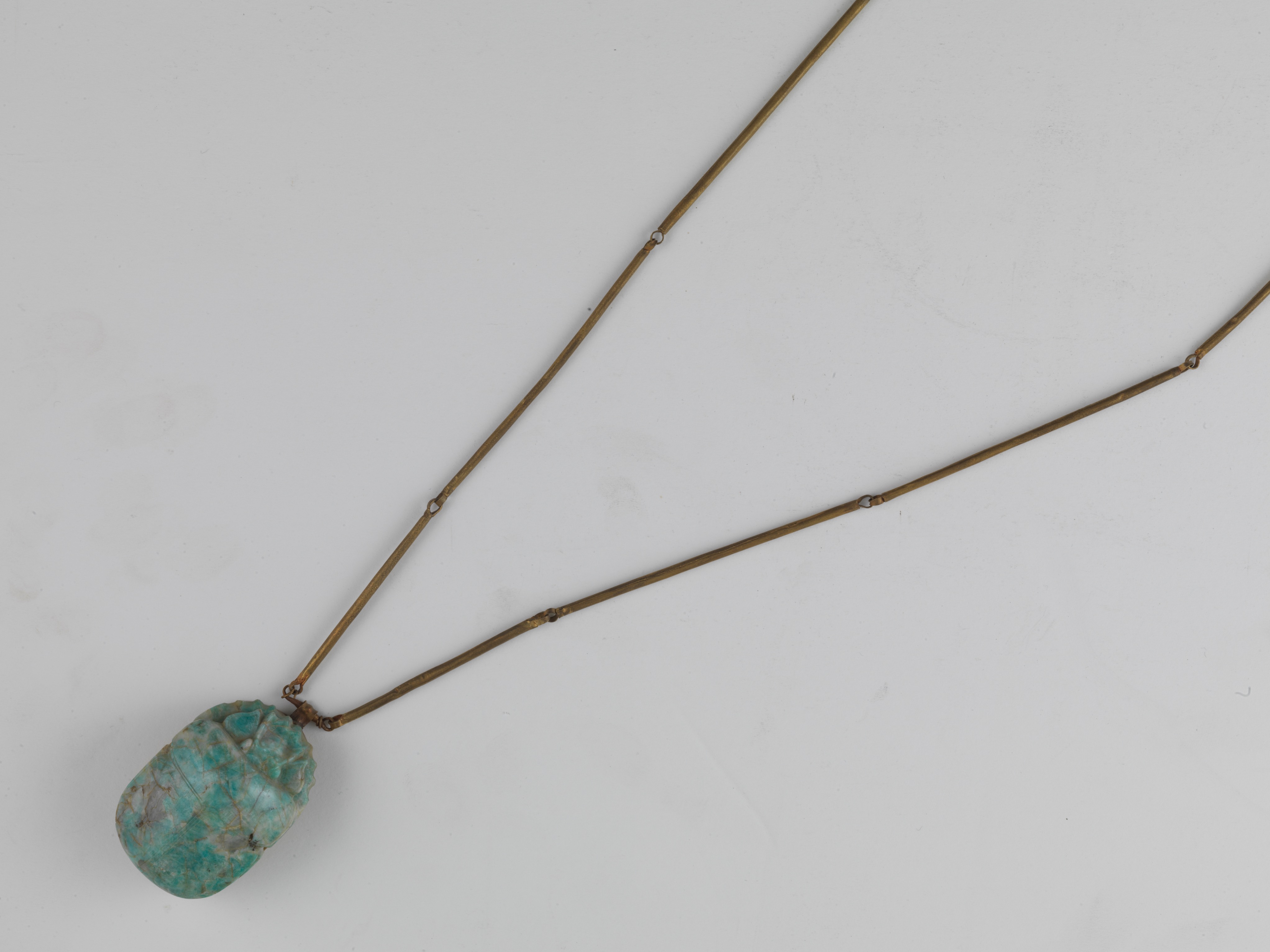
Five Must-See Artifacts in "Ramses the Great and the Gold of the Pharaohs"
This holiday season see “Ramses the Great” at the de Young for 20% off when you use SFARTS20. Valid Dec 1-16.
Ramses the Great was the most powerful, most celebrated pharaoh of ancient Egypt. Along with learning of Ramses’ rich history, de Young’s latest exhibition, "Ramses the Great and the Gold of the Pharaohs" features more than one-hundred and eighty objects for you to discover. These stunning possessions are displayed at the museum right now, and there are five objects that, we believe, are the most crucial in telling the story of the most important age in Egyptian history.

Egyptian Jewelry
Whether you were rich or poor, royalty or a farmer, dead or alive, everyone in ancient Egypt wore jewelry, including rings, necklaces, masks, earrings, crowns, and amulets. Jewelry was universal across social classes due to the goodluck powers it was believed to have. The power a piece of jewelry had was determined by its colors and materials. "The Book of the Dead," a famed New Kingdom funerary document, described how certain amulets should be made and placed on mummies to protect them in the afterlife. In addition to protection, jewelry celebrated the achievements of government officials like military leaders, queens, and kings.

Sennedjem's coffin
One of the most glorious and revealing objects in "Ramses the Great and the Gold of the Pharaohs" is the outer coffin of the ancient Egyptian artisan Sennedjem, who lived during the reigns of Ramses II and his father, Seti I. Sennedjem held the title of “servant in the Place of Truth,” indicating that he was one of a team responsible for constructing and decorating the royal tombs. During their days off, they could work on their own tombs; in Sennedjem’s case, his is regarded as one of the most beautiful constructed for a nonroyal.
Sennedjem’s own tomb was on a hill overlooking the workers’ settlement. A small pyramid sits on top of the entrance to an offering chapel. Below that lies Sennedjem’s decorated burial chamber that shows his progress from death into the afterlife. The wooden coffin is beautifully decorated in vivid colors with texts and vignettes from the Egyptian Book of the Dead.

Mummified animals
Animals were mummified as well for a variety of reasons but the most common was to sacrifice them to the gods they were most closely associated with. These animals ranged from birds to bulls, mongoose to crocodiles, cats to dogs, and even lions. The most commonly found mummified animals are cats. It is believed that mummified cats and animals resembling cats, like mongooses and lions, were sacrificed to the goddess Bastet, the goddess of fertility and protector of the sun god and human beings.
Some of the mummified animals in the exhibition are a cat, a mongoose, and even a lion cub.

Abu Simbel
Having stood for thousands of years, Abu Simbel is one of ancient Egypt's most famous architectural projects.
Abu Simbel, the great temple, was built by Ramses II to honor the sun-god, Re-Horakhty, and himself as a god to ensure his place in history. At the back of the temple, four statues resemble Re-Horakhty, Amun, Ramses II, and Ptah. The temple was designed to light up these figures on the spring and fall equinoxes, as the sun perfectly aligns for 20 minutes to shine on the statues of Re-Horakhty, Amun, and Ramses II, some 60 meters deep in the temple.
In the 1960s, when water from the Aswan High Dam threatened to flood Abu Simbel, UNESCO and the Egyptian Government sponsored a group of international scientists and engineers to deconstruct and reconstruct the temple 60m above its original site. You can now visit these infamous sites through the VR experience at the exhibition.

Heart Scarab Amulet
This heart scarab amulet was found in the burial chamber of Wenbauendjed, an ancient Egyptian general and high priest. This amulet was important in a person's afterlife as it would help guide the dead as they stood judgment before Osiris, the god of the afterlife.
The ancient Egyptians believed that the heart was the home of the mind and spirit. Therefore, the heart was called upon to testify to the character of the deceased when they stood judgment before Osiris. It was believed that during judgment a person's heart would be weighed on a balance against the feather of Ma’at, the goddess of truth and order. If their heart outweighed the feather, they had committed evil in life, and their soul would be devoured by the goddess Ammit, "the eater of hearts." If their heart was lighter than the feather, they had a clean conscience and could enter paradise.
The exhibition is now on view at the de Young museum in Golden Gate Park. Do not miss this once-in-a-lifetime experience to transport yourself to ancient Egypt and learn about one of the world’s greatest and longest ruling monarchs in this high-tech exhibition.
Ramses the Great and the Gold of the Pharaohs
de Young Museum August 20, 2022 – February 12, 2023
Book tickets here


